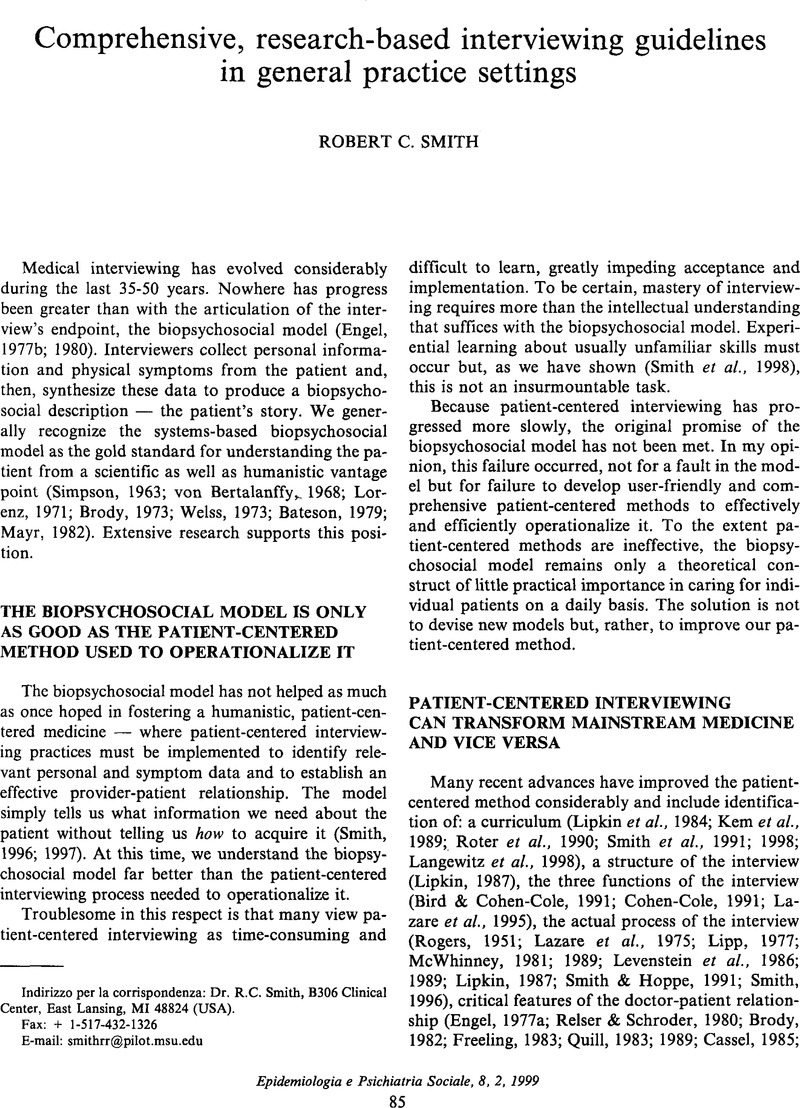Crossref Citations
This article has been cited by the following publications. This list is generated based on data provided by Crossref.
Zimmermann, Christa
Piccolo, Lidia Del
and
Saltini, Anna
1999.
The importance to teach a biopsychosocial approach to medical interviewing before teaching the recognition of emotional disorders.
Epidemiologia e Psichiatria Sociale,
Vol. 8,
Issue. 2,
p.
71.
Smith, Robert C.
Marshall-Dorsey, Alicia A.
Osborn, Gerald G.
Shebroe, Valerie
Lyles, Judith S.
Stoffelmayr, Bertram E.
Van Egeren, Lawrence F.
Mettler, Jennifer
Maduschke, Karen
Stanley, Jennifer M.
and
Gardiner, Joseph C.
2000.
Evidence-based guidelines for teaching patient-centered interviewing.
Patient Education and Counseling,
Vol. 39,
Issue. 1,
p.
27.
Rimondini, Michela
and
Del Piccolo, Lidia
2002.
Patient centered approach from general practice to psychiatry.
Epidemiology and Psychiatric Sciences,
Vol. 11,
Issue. 4,
p.
232.
Zimmermann, Christa
Piccolo, Lidia Del
and
Mazzi, Maria Angela
2003.
Patient cues and medical interviewing in general practice: examples of the application of sequential analysis.
Epidemiologia e Psichiatria Sociale,
Vol. 12,
Issue. 2,
p.
115.
Del Piccolo, Lidia
Putnam, Samuel M
Mazzi, Maria Angela
and
Zimmermann, Christa
2004.
The biopsychosocial domains and the functions of the medical interview in primary care: construct validity of the Verona Medical Interview Classification System.
Patient Education and Counseling,
Vol. 53,
Issue. 1,
p.
47.


